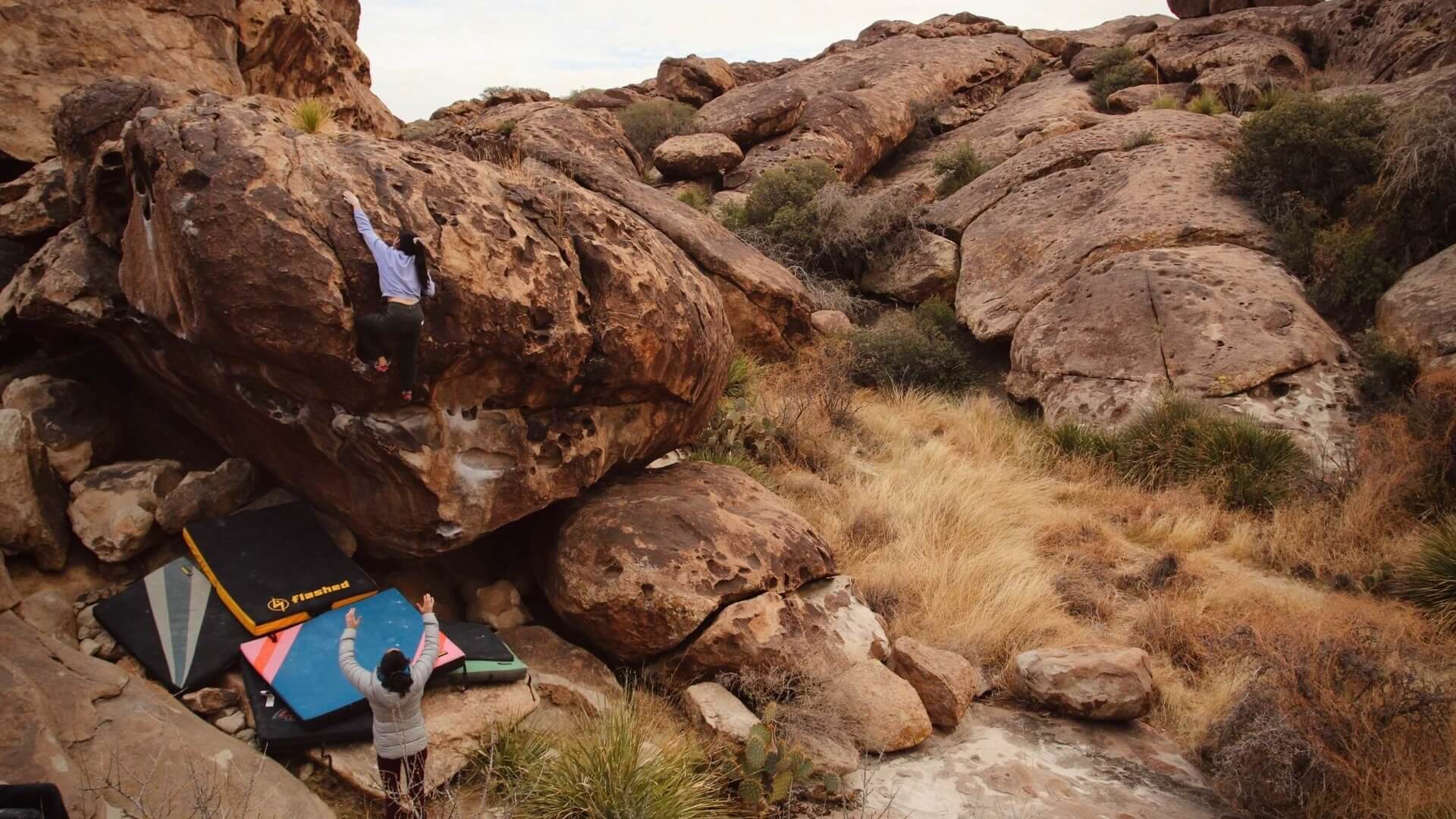Bouldering is a fun and exciting way to get into climbing, and it’s perfect for beginners who want to start small and build their skills over time. If you’re new to bouldering, here are a few tips and techniques to help you get started:
Find A Bouldering Gym
Find a good bouldering gym: One of the best ways to get started with bouldering is to find a good bouldering gym. Look for a gym with a variety of routes that are suitable for beginners, as well as knowledgeable staff who can provide guidance and instruction. It’s important to start your climbing journey in a climbing gym where you can meet folks that can guide you with proper technique and climbing etiquette.
When looking for a good bouldering gym, there are a few key factors to consider:
Variety of routes: A good bouldering gym should have various routes suitable for climbers of all ability levels, including beginners. Look for a gym that has routes that are labeled with difficulty ratings, so you can choose routes that are appropriate for your skill level.
Quality of the climbing surfaces: The quality of the climbing surfaces is an important factor to consider when choosing a bouldering gym. Look for a gym with climbing walls and floors made from high-quality materials and well-maintained.
Knowledgeable staff: Look for a bouldering gym that has knowledgeable staff who can provide guidance and instruction. Staff members should be able to answer questions and provide recommendations for routes that are suitable for your skill level.
Amenities: Consider the amenities offered by the bouldering gym, such as shower facilities, lockers, and a comfortable area to relax and socialize.
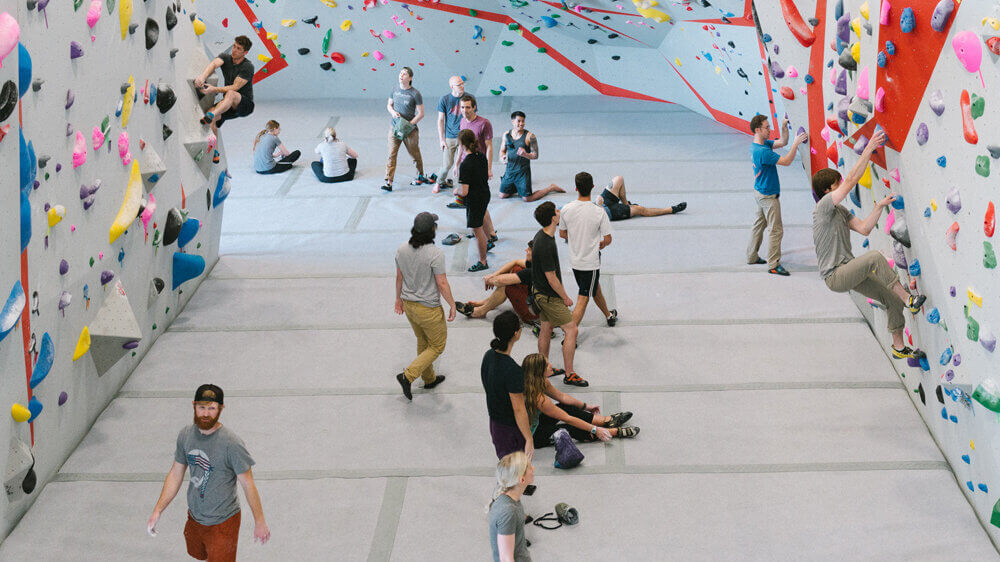
Bouldering Etiquette
Bouldering etiquette refers to the unwritten rules and behaviors that are expected when climbing in a bouldering gym or outdoor setting. Bouldering etiquette is important because it helps to create a safe and enjoyable environment for all climbers, as well as respect the rights of others. Here are a few key aspects of bouldering etiquette:
Respect other climbers: Bouldering gyms and outdoor climbing areas can be busy, and it’s important to respect the rights of other climbers. This includes waiting your turn to climb, not disrupting others who are climbing, and respecting their space. Do not spray beta without the climber’s consent.
Use good hygiene: Bouldering gyms and outdoor climbing areas can be high-touch environments, and it’s important to practice good hygiene to reduce the risk of transmission of germs and bacteria.
Follow safety protocols: It’s important to follow safety protocols and guidelines when climbing, both for your own safety and the safety of others. This includes using crash pads properly, following spotting techniques, not walking under fall zones, etc.
Respect the environment: When climbing outdoors, it’s important to respect the environment and leave no trace. This includes packing out any trash, staying on designated trails, and not damaging the natural environment.
By following these guidelines, you’ll be able to enjoy your time climbing and help create a safe and enjoyable environment for all.
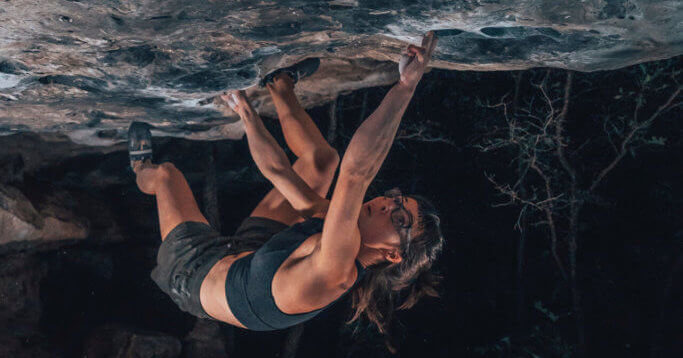
Learn the Basics
Learn the basics: Before you start climbing, it’s important to learn the basics of bouldering safety and technique. This includes how to properly use a crash pad, how to spot a climber, and how to climb efficiently and effectively.
Crash pads: A crash pad is a foam pad that is used to cushion falls while bouldering. It’s important to learn how to properly use a crash pad to ensure the safety of the climber and spotter. When setting up a crash pad, make sure to place it in a flat, stable location and unfold it completely. Look at where your ‘fall zones’ are and place the pads accordingly. Avoid gaps in the pads or overlapping the crash pads making an uneven landing zone.
Spotting: Spotting is a technique used to help protect a climber from falling. When spotting, the spotter stands behind the climber and guides their fall onto the crash pad to minimize the risk of injury. It’s important to learn how to properly spot a climber to ensure their safety.
Climbing efficiently and effectively: To climb efficiently and effectively, it’s important to use proper body positioning and technique. This includes keeping your hips close to the wall, maintaining a straight arm position, and using your feet and legs to push up rather than pulling yourself up with your arms. It’s also important to plan out your route beforehand and look for hand and foot holds that are within reach.
By learning these basics of bouldering safety and technique, you’ll be well-prepared to start climbing and improving your skills. It’s also a good idea to seek guidance from more experienced climbers or take a bouldering class to further develop your skills.
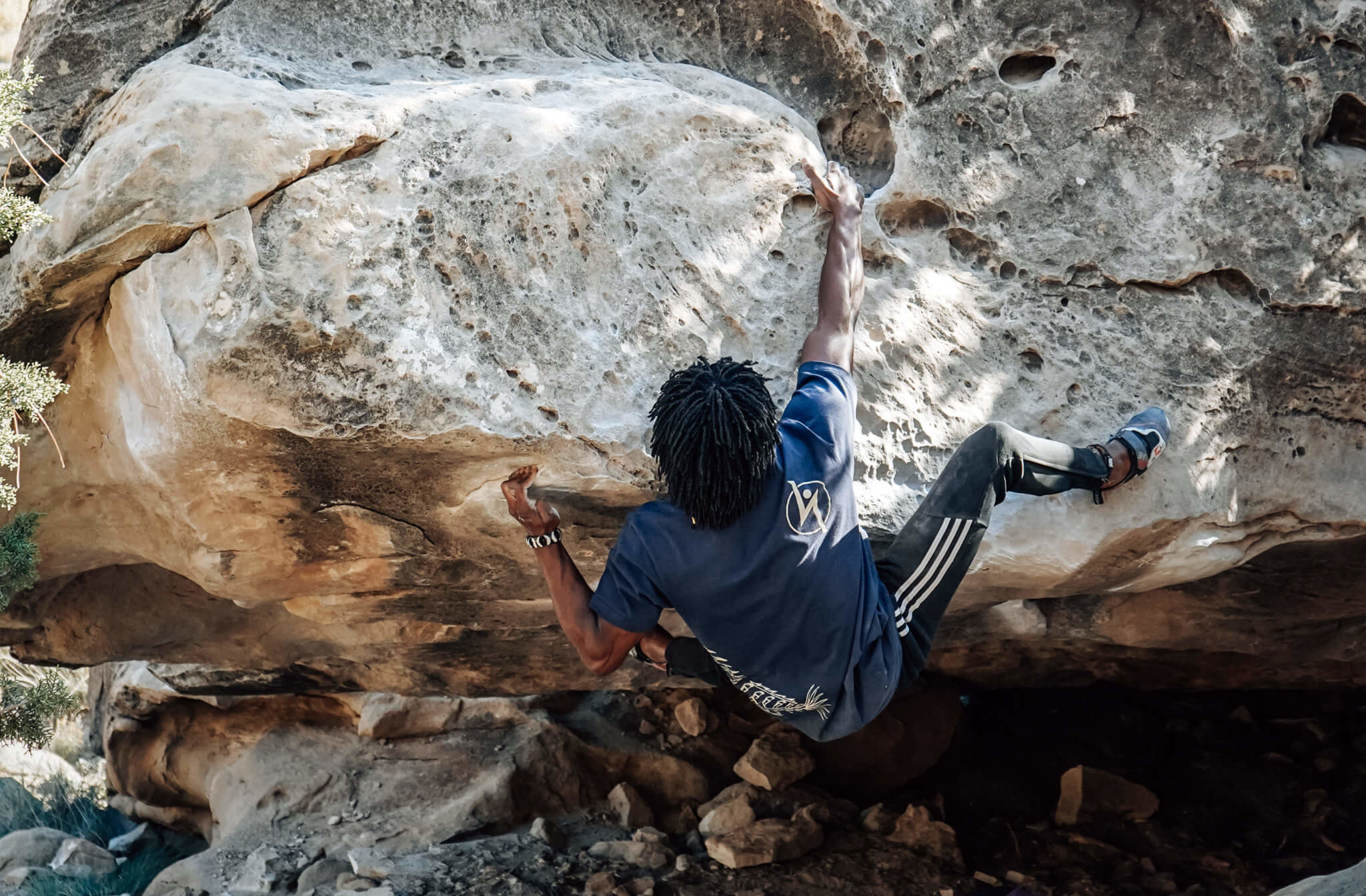
Start with Easy Routes
Start with easy routes or problems: As a beginner, it’s important to start with easy routes that are within your ability level. This will help you build confidence and skills gradually, rather than getting frustrated or overwhelmed by more difficult routes.
Look for routes that are labeled as beginner or intermediate: Many bouldering gyms will label their routes with a difficulty rating. Learn about the V-Scale rating system, which is a universal rating system used primarily in the North America to determine the difficulty of a climb. As a beginner, you should start with routes that are labeled as beginner or intermediate or V0-V3.
Choose routes that have plenty of hand and foot holds: Easy routes should have plenty of hand and foot holds that are within reach, allowing you to move smoothly from one hold to the next.
Take breaks and rest when needed: It’s okay to take breaks and rest when needed, especially if you’re feeling tired or frustrated. This will help you maintain your energy and focus and allow you to climb longer.
By starting with easy routes and building your skills gradually, you’ll be well-prepared to tackle more difficult routes as you become more confident and proficient. Remember to have fun and enjoy the process of learning and improving.
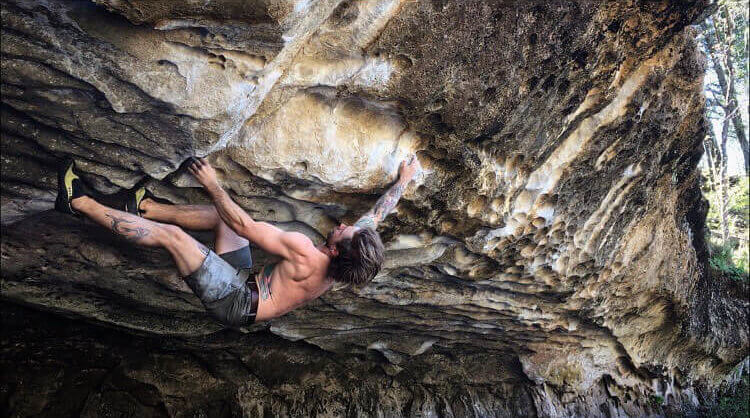
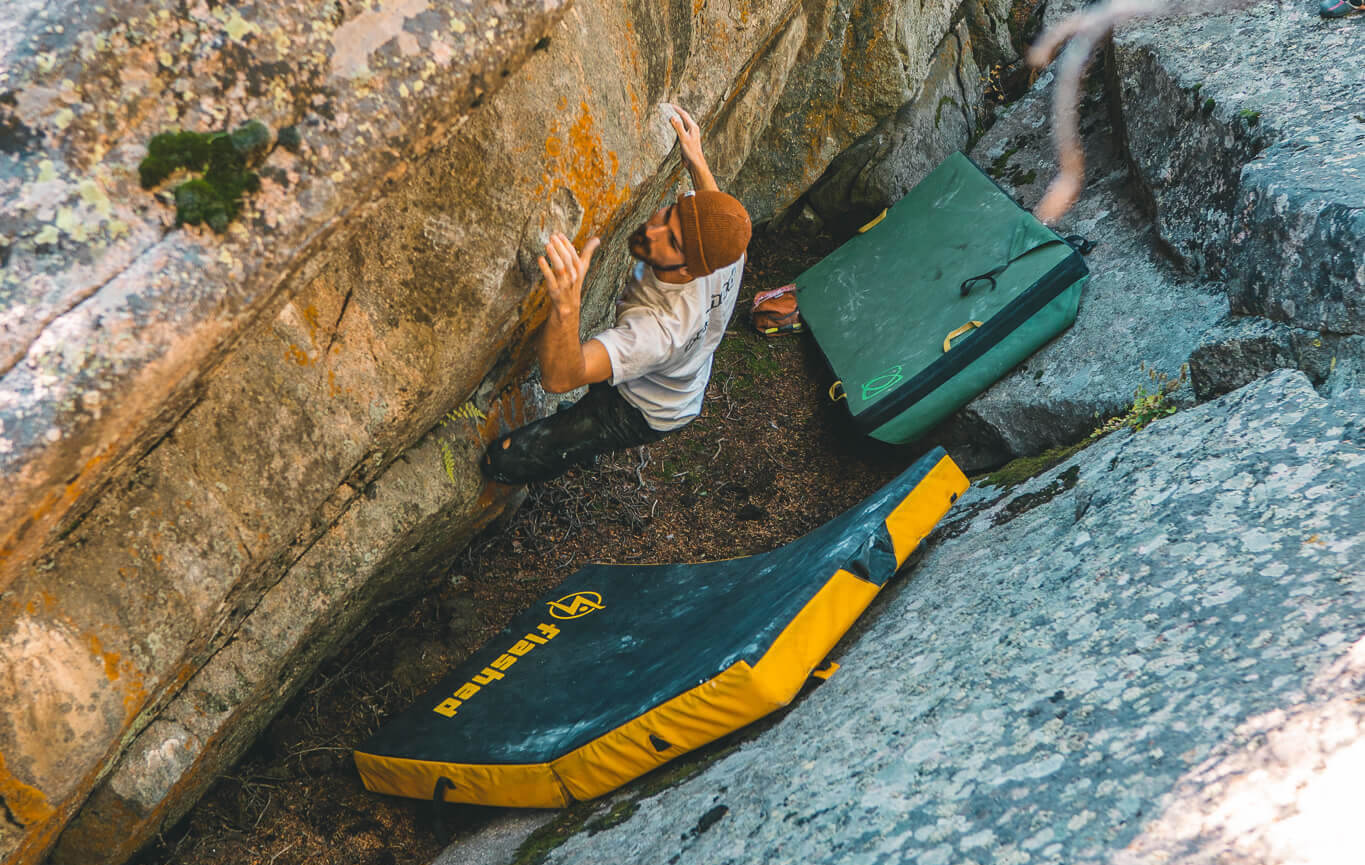
Get the Gear
Get the right gear: While bouldering doesn’t require as much gear as other forms of climbing, there are a few key pieces of equipment that you’ll need. These include climbing shoes, a chalk bag, and a crash pad.
Climbing shoes: Climbing shoes are a key piece of gear for bouldering. They are designed to provide a secure and precise fit, as well as excellent traction on climbing holds. When choosing climbing shoes, look for a pair that fits snugly and provides the right balance of support and flexibility for your foot type and climbing style.
Chalk bag: A chalk bag is a small, pouch-like bag that is used to hold climbing chalk. It’s a good idea to have a chalk bag when bouldering to help keep your hands dry and improve your grip on the climbing holds. Look for a chalk bag that is made from a durable material and has a secure closure to prevent chalk from spilling out.
Crash pad: A crash pad is a foam pad that is used to cushion falls while bouldering. It’s an essential piece of gear for any boulderer, and it’s important to choose a crash pad that is made from high-quality, durable foam and has a secure closure to prevent it from shifting while in use.
By getting the right gear for bouldering, you’ll be well-equipped to climb safely and effectively. Remember to take care of your gear and replace it as needed to ensure that it is in good working order.
Conclusion:
By following these tips and techniques, you’ll be well on your way to becoming a proficient boulderer. Don’t be afraid to ask for help or guidance from more experienced climbers, and most importantly, have fun!

